Welcome to the World of Competitive, Intercollegiate Meat Judging

This story appears in the May 6, 2019, issue of Sports Illustrated. For more great storytelling and in-depth analysis, subscribe to the magazine—and get up to 94% off the cover price. Click here for more.
Taylor Schertz stayed on the move as she considered the four pig carcasses dangling in front of her, their hooves pierced by gleaming silver hooks.
A clockwise sweep to the left to gauge their exposed innards.
A dip back to the right for a better view of the flanks dotted by inspection stamps.
A plunge forward to inspect each veined hide up close.
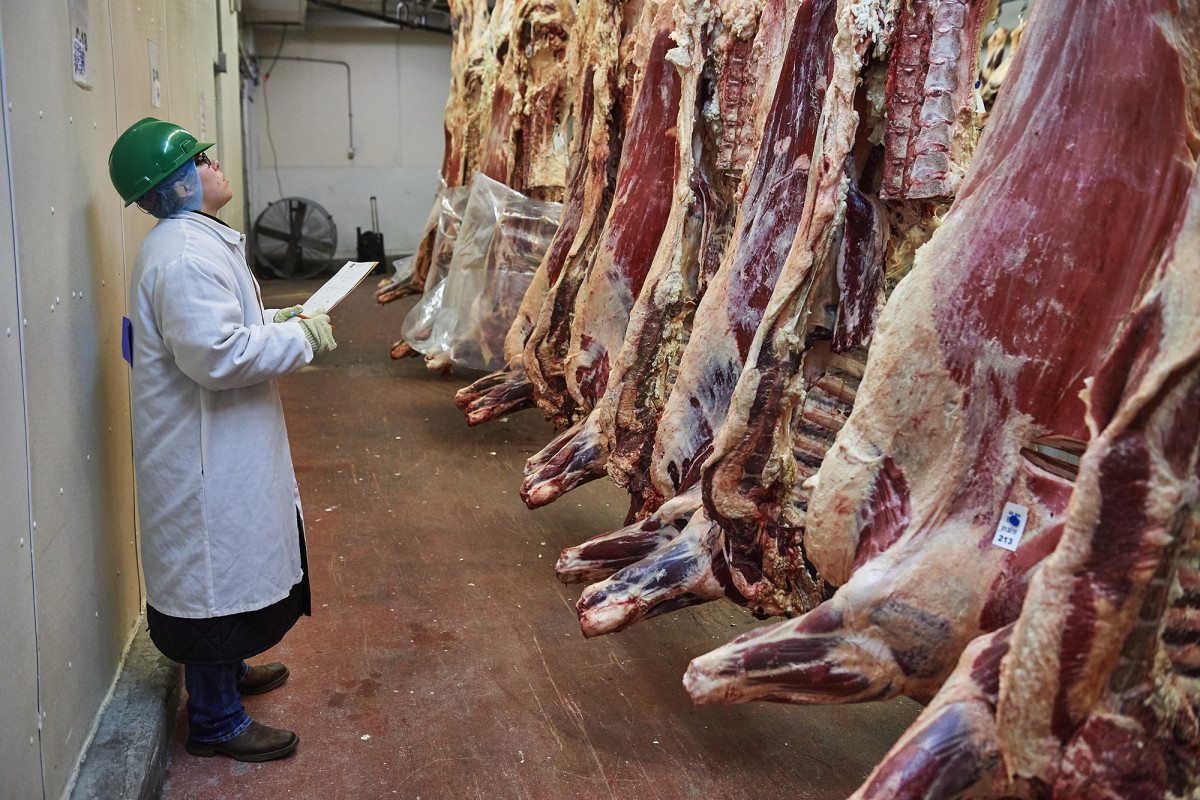
Her baggy blue jeans scraped the floor with every pass. Her blond hair was braided and pulled inside a red hairnet, which itself was tucked under a red hard hat. Industrial fans whirred in the background. Every 10 minutes, she and a dozen students with name tags pinned onto their white lab coats rotated between a series of eight stations, each one bearing a different sampling of cuts to inspect. None of them said a word. A wall-mounted thermometer put the temperature at 36°—cold enough for Schertz to layer a red parka atop a hoodie beneath her frock and to pull a gray mitten over her left hand, which she used to grip a clipboard the way a doctor carries a patient’s chart. On it she scribbled shorthand and bubbled in a Scantron that read intercollegiate meat judging contest quality grading.
It was Super Bowl Sunday, and Schertz, a Texas Tech sophomore, was entering her fourth hour in the walk-in cooler at Frontier Meats in Fort Worth, where she and 83 other students were competing in the Southwestern Intercollegiate Meat Judging Contest. The following morning, Tech would be announced as the winner of the team competition while Schertz would be named the high individual scorer, the second time she has done so in three competitions this semester. Midway through the 2019 season, which corresponds to the calendar year instead of the academic one, she is regarded as the best meat judge in the country.

Intercollegiate meat judging is like no sport you’ve ever seen. Its core components, however, are intimately familiar to anyone who follows NCAA athletics. It’s college football in a cooler, a world built around high school recruiting, top-notch facilities, competition for scholarships, rivalries, national championships, All-Americans and professional scouts.
The biggest difference? Here, college students aren’t the meat market. They grade the beef.
First, let’s address the obvious question: No, no one actually eats the meat.
“People think we’re in the meat lab grilling steaks,” says Sam Davis, a senior animal science major at Kansas State who competed last year, “and we’re about to have a burger-eating contest.”
Otherwise intercollegiate meat judging is exactly what it sounds like: Colleges compete against one another to see which team can best evaluate cuts of beef, pork and lamb. In Fort Worth, students began to spill out of white passenger vans at 5:45 a.m. By 7 a.m. they were in the cooler, where a panel of seven event officials had spent the previous day setting up the ten stations, or classes. Most classes call for judges to identify and order a series of cuts according to quality. One class, yield grading, requires the judge to eyeball the amount of fat and muscle on a beef carcass down to fractions of an inch. Then there’s specifications, in which judges evaluate whether a table of 10 cuts fits a checklist of United States Department of Agriculture standards.
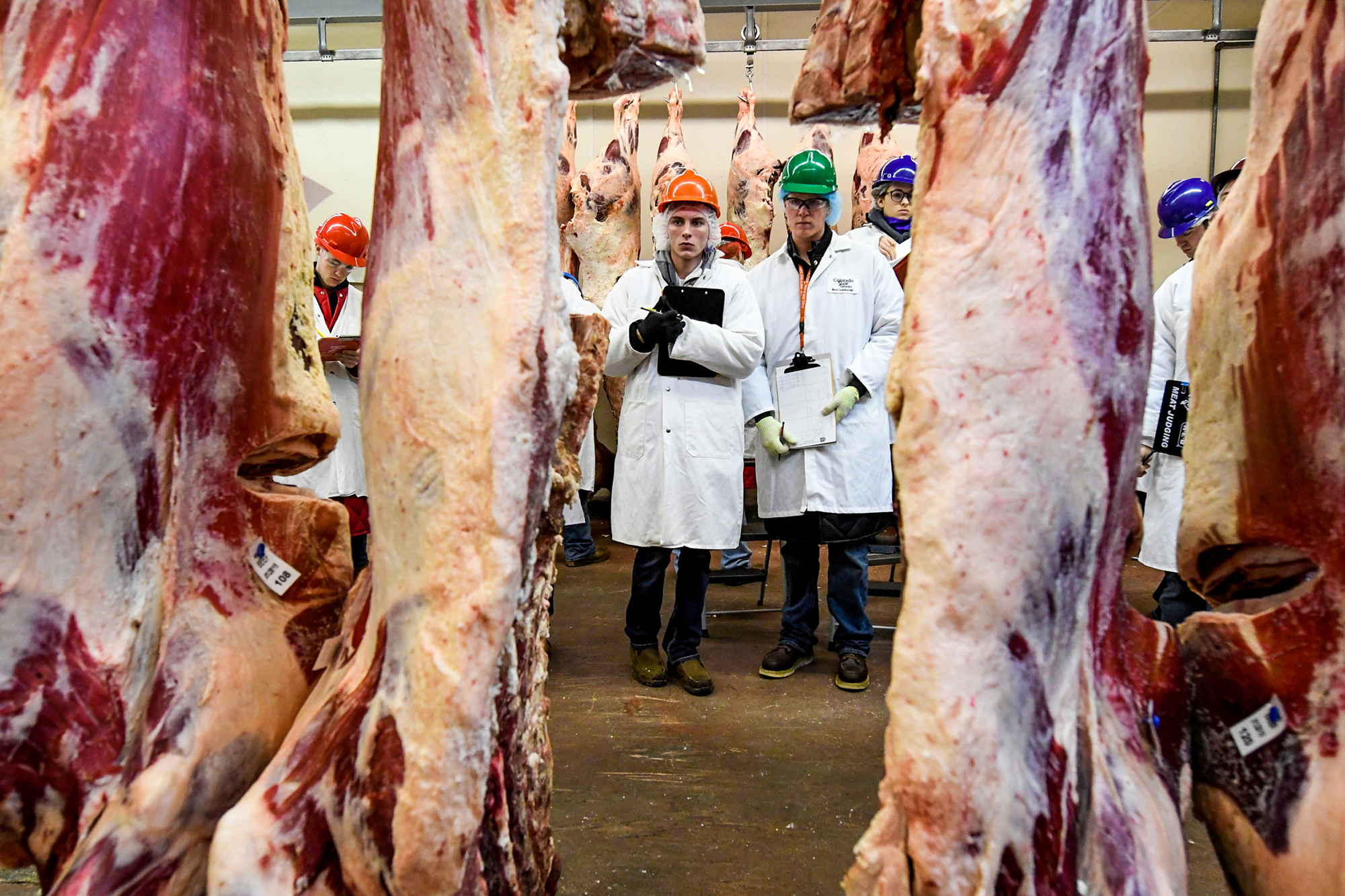
After two hours, competitors decamped to a warehouse room to sit down and explain why they judged the way they judged. A lunch break gave way to the afternoon session, in which they repeated the morning routine. By midafternoon the contest was over. Soon after, the officials issued each team’s raw scores as well as a rubric for how each class should have been graded. An awards banquet was held the following day, before students headed home.
A school can enter as many competitors as it pleases—Texas Tech, one of eight schools competing, sent 22 to Fort Worth, a full quarter of the field—but only four judges’ scores count toward the team’s official total. A meat judging coach’s greatest challenge is identifying which combination of teenagers can be depended on in a given weekend. “You never pick the right team,” Clay Bendele, a judge on the 2015 Texas Tech national champions and a Red Raiders coach two years ago, says with a sigh. Talent evaluation is difficult because a meat judger’s competitive window is so small: Rules limit students to one season of eligibility at the college level.
Competitive meat judging traces its roots to 1926, when it was introduced at the International Livestock Exposition in Chicago. For the first 70 years it was governed by the National Livestock and Meat Board. Since 1996 it’s fallen under the purview of the American Meat Science Association, which schedules six competitions each year—two in the spring, four in the fall—headlined by the International Intercollegiate Meat Judging Contest in Dakota City, Neb., every November. It’s the national championship; winners are awarded belt buckles instead of rings. A seventh competition, organized by the Houston Livestock Show each March, completes the schedule of major events. Nineteen schools entered last year’s International, but the heavy hitters travel to all seven and mostly hail from agricultural hotbeds: Texas Tech, Oklahoma State, Texas A&M, Colorado State and Kansas State.
Some meat judges begin as young as nine years old through grassroots 4H competitions (think 7-on-7 football). Plenty more start in high school with the Future Farmers of America (FFA) circuit (akin to traditional high school athletics). But the most decorated intercollegiate meat judge of all time, Maddy Ainsley, took it up as a Texas Tech sophomore, when she won five of seven contests in 2017. “Meat judging is really you against yourself,” says Dr. Mark Miller, Texas Tech’s head coach. “Your number one opponent is you, because it’s an objective thing that you know all the answers to. It’s a matter of you being able to put those together with the most precision.”
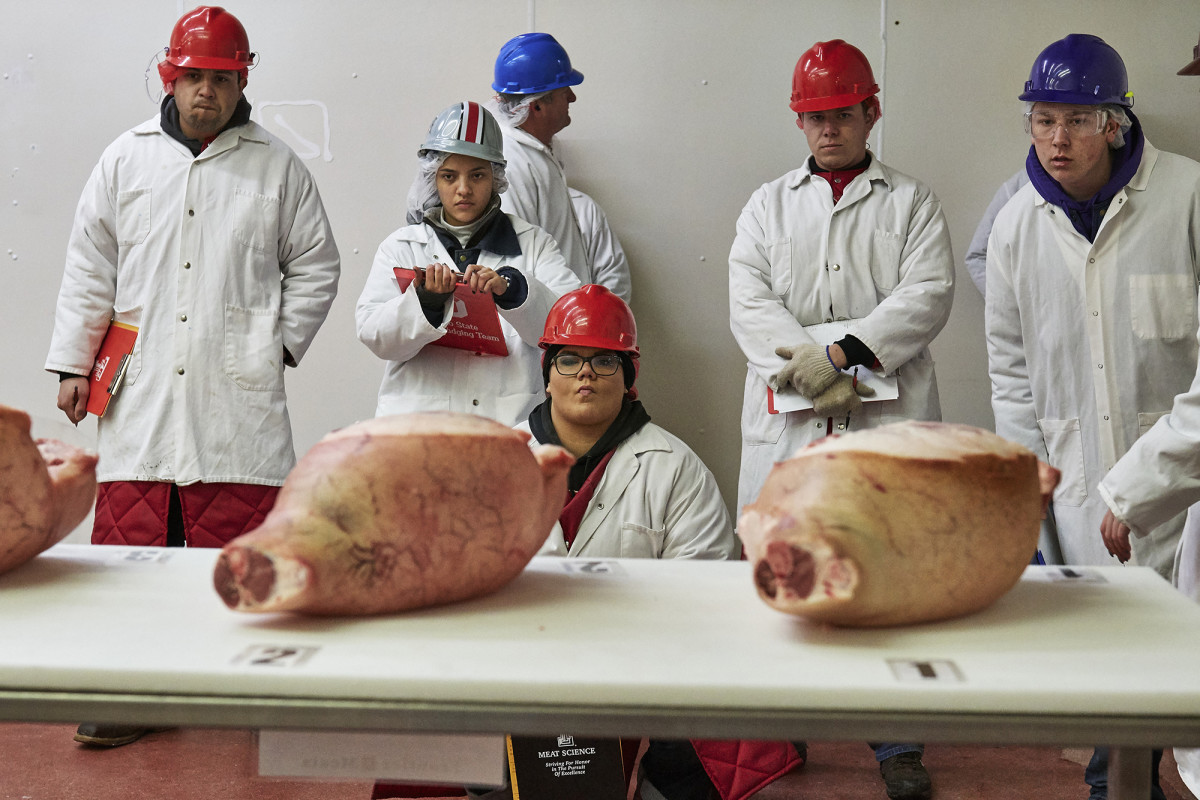
The skill set of a champion meat judge is both eminently teachable and difficult to master: quick decision making, critical reasoning, self-assurance and, above all, the ability to quiet one’s mind for upward of six hours standing in frigid temperatures and total silence. “You have to fight your own demons in the meat judging cooler,” says Erin Beyer, who judged on Texas Tech’s 2015 team and coached in ’17.
All of which, to the uninitiated, sounds a touch out there.
“Whenever outsiders ask about it, you just admit, ‘Yeah, it’s really weird,’ ” says Kansas State’s Davis. “We freeze our butts off for five hours in a contest, and it is what it is.”
Just like their counterparts in NCAA athletics, plenty of judges will go pro in something other than meat. Still, nearly 80% carve out careers in the food and livestock industries, where corporate giants like Tyson Foods, Cargill Foods and Hormel Foods all sponsor contests and eagerly recruit judges. None of them wind up as household names, but their work can become kitchen staples: Rody Hawkins, a former meat judge at Tennessee and coach at Kentucky, coinvented Lunchables and relaunched the Slim Jim as the product that became globally famous.
Regulatory agencies such as the USDA get into the game, too. “We do hopefully glean some of the students off these judging teams because they can go right into my world and go to work,” says Darrell Dowd, assistant to the national supervisor of the standards branch of the USDA.
For the last decade, pro scouts have kept their eye on one school in particular.
Taylor Schertz was a Red Raider from the womb. Her parents met as Texas Tech students in the mid-90s; Taylor, the oldest of four girls, was conceived while her father, Michael, was in graduate school at Tech and an assistant coach for the meat judging team, which he competed for in 1995. Texas Tech was a program on the rise but barely a decade removed from being meat judging’s doormat: It took 44 years for the school to win its first major contest after the program was estab-lished in 1938.
Today the Red Raiders are the Alabama football of the meat judging world. Under the guidance of Coach Miller, Texas Tech has reset the standards of collegiate meat judging excellence. Tech has captured seven of the last 11 national championships, highlighted by a three-year stretch from 2015 through ’17 in which it won a staggering 19 of 21 major contests. The crown jewel came in ’17, when Tech became the first and only school to go undefeated since the major schedule expanded to seven events in 1981. Says Travis O’Quinn, a Tech alum who’s now the coach and faculty sponsor of Kansas State’s meat judging team, “What they’ve done ranks right up there with the John Wooden UCLA Bruins. That level of dominance is seldom seen in any athletic competition.”
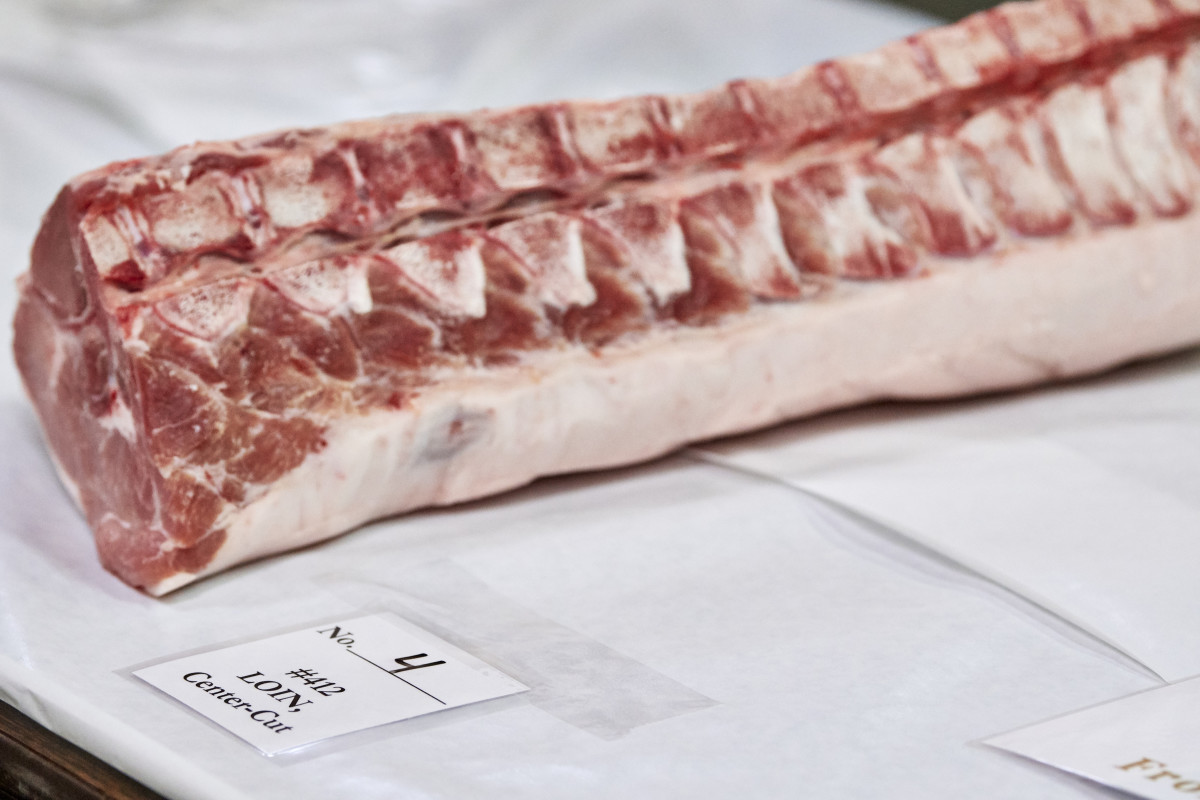
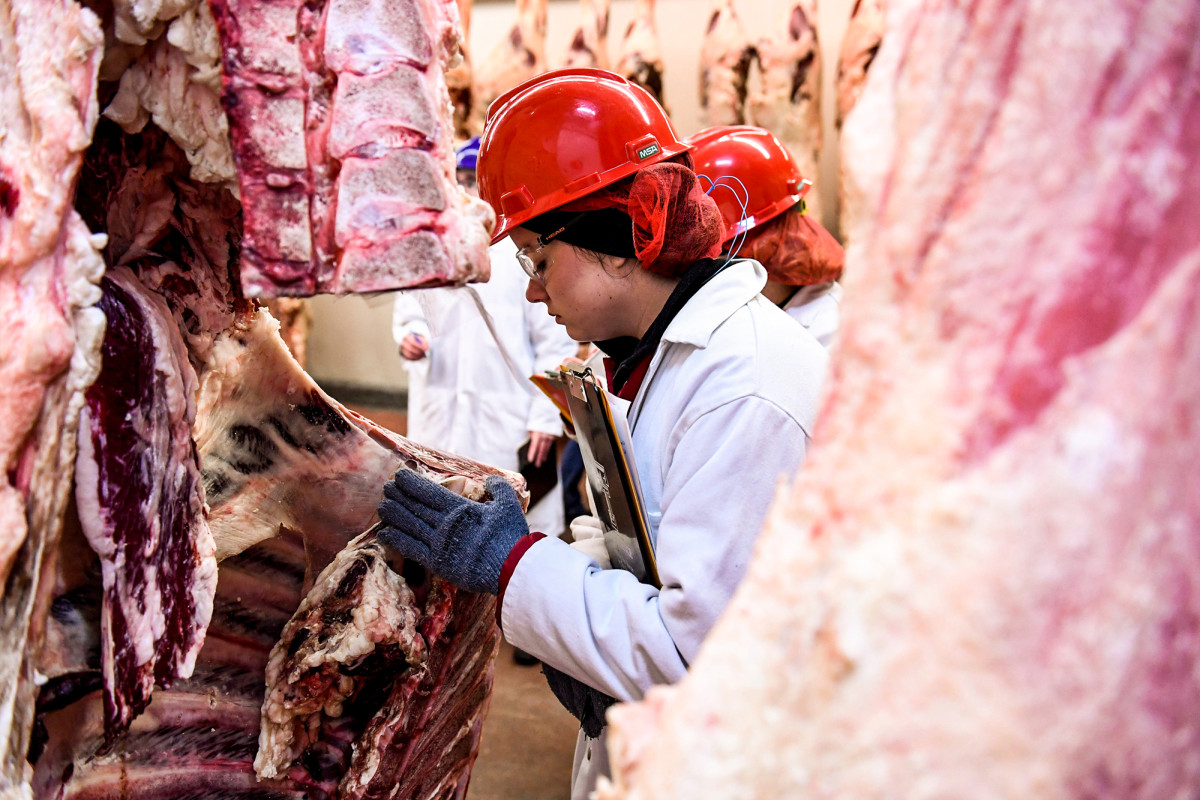
There’s no consensus on why exactly the Red Raiders are so unstoppable. There are the usual reasons that distinguish, say, college football’s predators from the prey. Geography, for starters: “They’re in the heart of cattle country,” says Dowd. Texas Tech’s Lubbock campus sits just over an hour away from a Cargill Foods plant in Friona, Texas, where the team holds practice every Friday afternoon with a fresh set of cuts to evaluate—the equivalent of extra live reps on the practice field. Several of their competitors travel at least twice as long to access something similar.
There’s also Raider Red Meats, a side business established in 1982 to recoup the costs of running the meat judging team by packaging and selling leftover teaching product as steaks, chops and processed meats. Over time it’s mushroomed into a $2.2 million auxiliary enterprise of Texas Tech that does retail and catering across the state. All proceeds funnel back into the program’s endowment, which presently is in the neighborhood of $10 million. That, in turn, allows Miller to furnish scholarships to help defray tuition costs at a public school where most of his team already pays in-state rates.
But according to O’Quinn, the easiest explanation for Texas Tech’s dominance might be the most insurmountable of all: “They just have a dire commitment to do more than what everyone else is willing to do consistently.”
The team decamps for Friona by 1 p.m. each Friday, returning to Lubbock around 8 or 9 that evening. The next morning they’re in the cooler at 4 a.m. for Super Saturdays, an all-day gauntlet that simulates contest conditions and can stretch up to 12 hours. That’s on top of two more weekday practices squeezed in around students’ class schedules. Outside of contest weeks, that cycle repeats itself every week of the academic year. It works—and nobody, from the students to the coaches, wants to be the team responsible for breaking the cycle of success. “There’s always going to be that pressure because you have the teams before you that have done so many great things,” Schertz says.
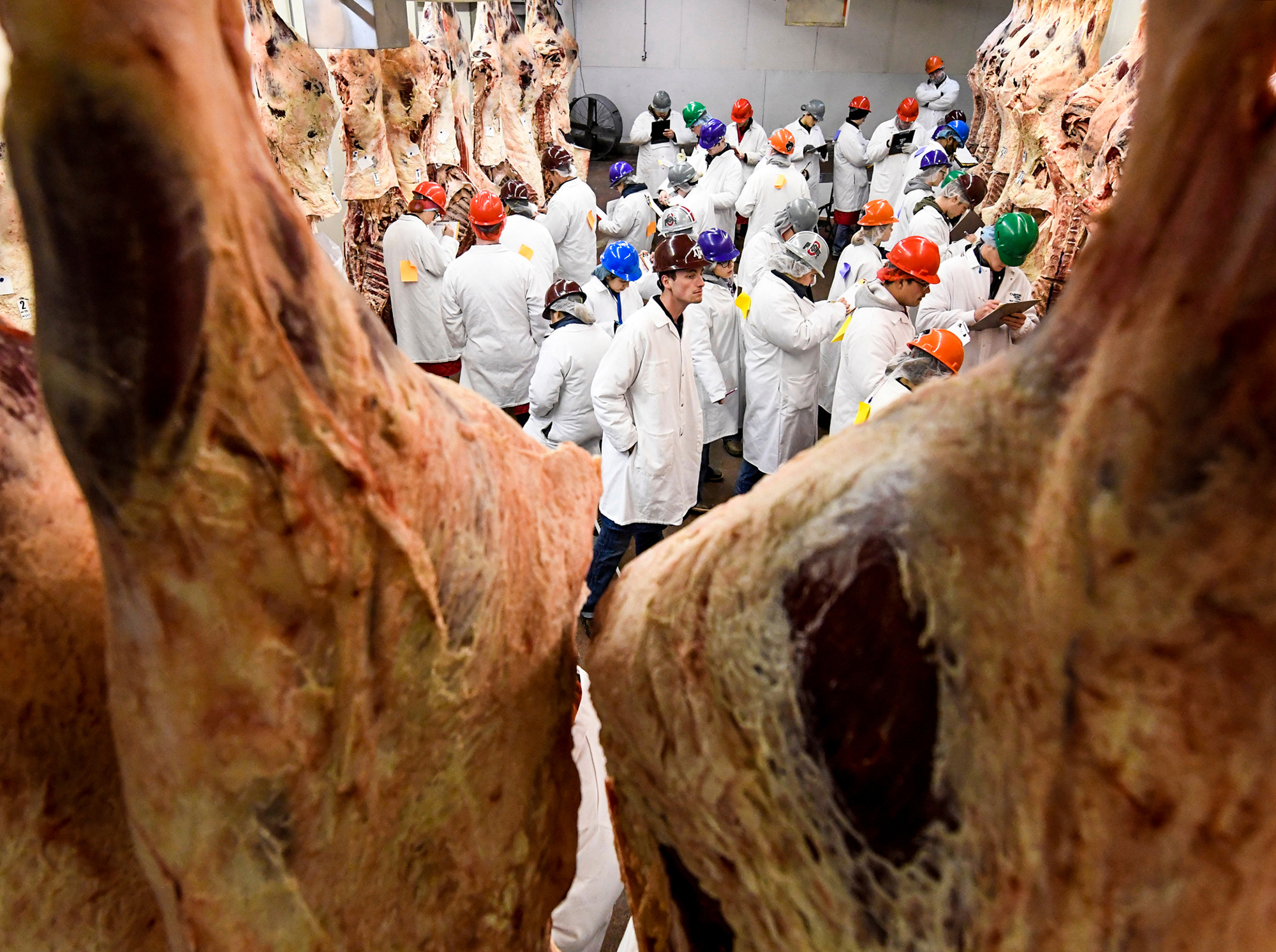
That same ethos bleeds over into talent acquisition, where Miller is notorious for being the best closer in the business. He susses out targets using the same tactics as college football coaches. Miller scouts stat lines through JudgingCard.com, a website that tracks results for every high school and college meat judging competition in the country. Otherwise, it’s word of mouth through his network of high school coaches. Then there are pipeline programs such as San Antonio’s Hondo High School and Clarendon College, both of which are coached by Tech alums. Miller also evaluates prospects firsthand at summer camps on Tech’s campus. Loni Lucherk, a 29-year-old Ph.D. student and former All-American who competed for and later coached under Miller, got her first recruiting letters and Texas Tech swag as a high school freshman.
Schertz was a Texas 4H state champion as a high school senior, in 2017. Her family ties to the university were so ingrained that, she says, “honestly, there was no other -option” for where she’d judge meat in college. But Miller still pursued her more relentlessly than any other coach did.
“There’s nobody in the same ballpark as Mark Miller when it comes to recruiting,” says Dr. Jeff Savell, who until recently was Miller’s counterpart at Texas A&M.
“Nobody.”
The Nick Saban of intercollegiate meat judging can often be spotted in a red fleece vest with his program’s mantra —“Striving for honor in the pursuit of excellence while unselfishly serving others”—stretched across the shoulder blades in a white font.
Mark Miller was a Texas Tech junior in 1981 when Gordon W. Davis, the first coach to record a 6–0 season while at Texas A&M, moved to Lubbock to take on a moribund program. It amounted to Bear Bryant’s choosing Kansas instead of Alabama once he left the Aggies.
Miller competed for Davis that year, then learned at his feet as an assistant coach in 1982 and ’83. Along the way he, a few friends and his wife, Celia, raised the first $5,000 of that now-eight-figure endowment by working catering gigs all over town. Miller moved to Texas A&M to pursue a Ph.D. in meat science, and in 1987 he landed his first head coaching job at Georgia while serving as an assistant professor of meat science. By September 1990 he was back in Lubbock to succeed Davis as head of the Red Raiders’ program.
Twelve national championships later, Miller’s legacy is unimpeachable. It isn’t just that he’s captured every piece of hardware but that he’s done so in every way imaginable. Miller has won with novices like Ainsley and lifers like Lucherk, who won so many 4H and FFA competitions while growing up that she estimates she’d earned $70,000 in scholarships and prize money before ever setting foot on campus. Miller doesn’t have a coaching tree so much as a coaching forest: Six of the other seven schools competing at Fort Worth had former Raiders on the coaching staff. Miller’s quest for a 13th belt buckle now runs through his former pupils. “Like when Coach Saban has [to face former disciples] Kirby Smart and Mark Dantonio,” says Mike Orth, chair of Tech’s Animal and Food Sciences department, with a grin.
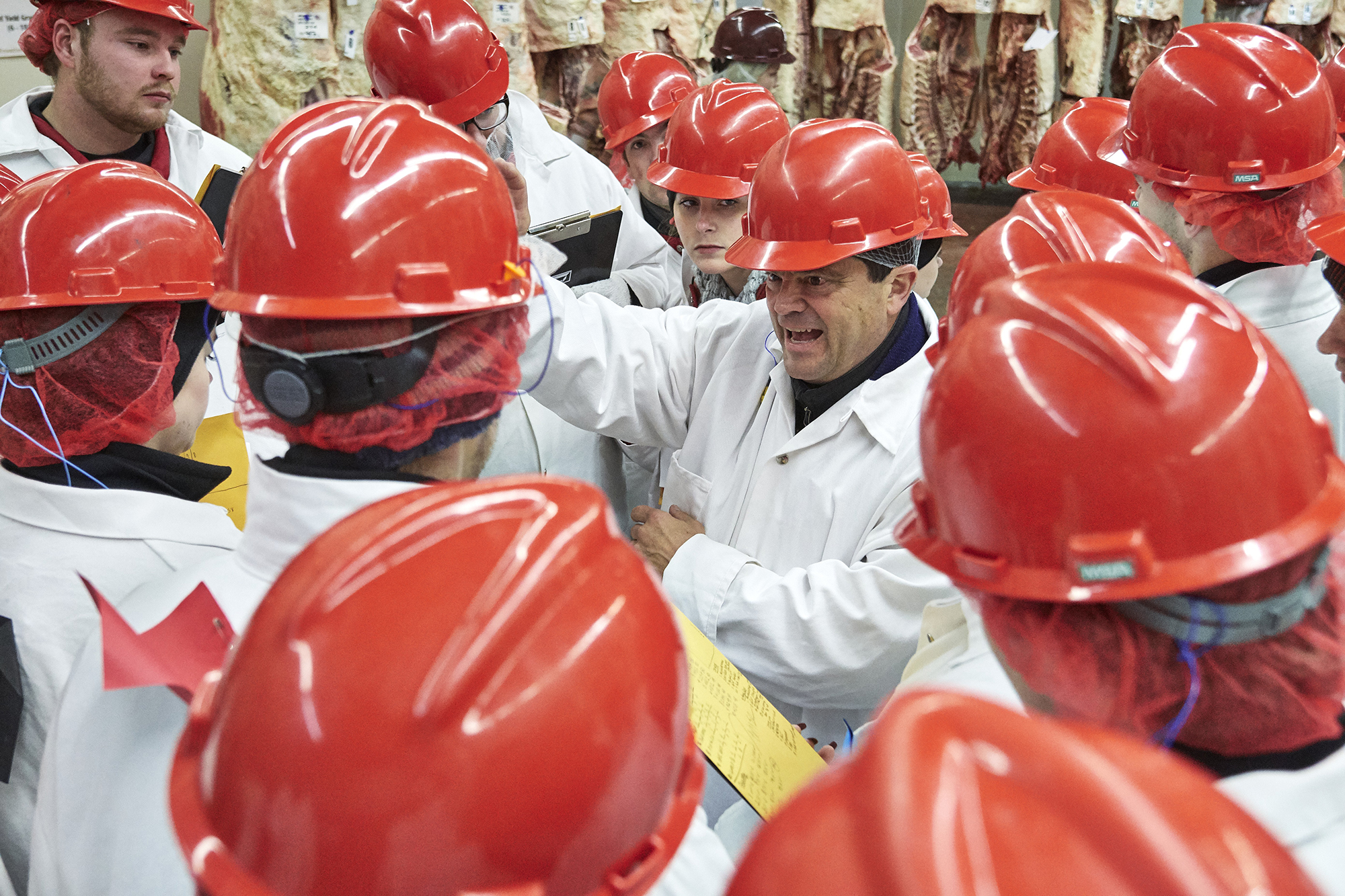
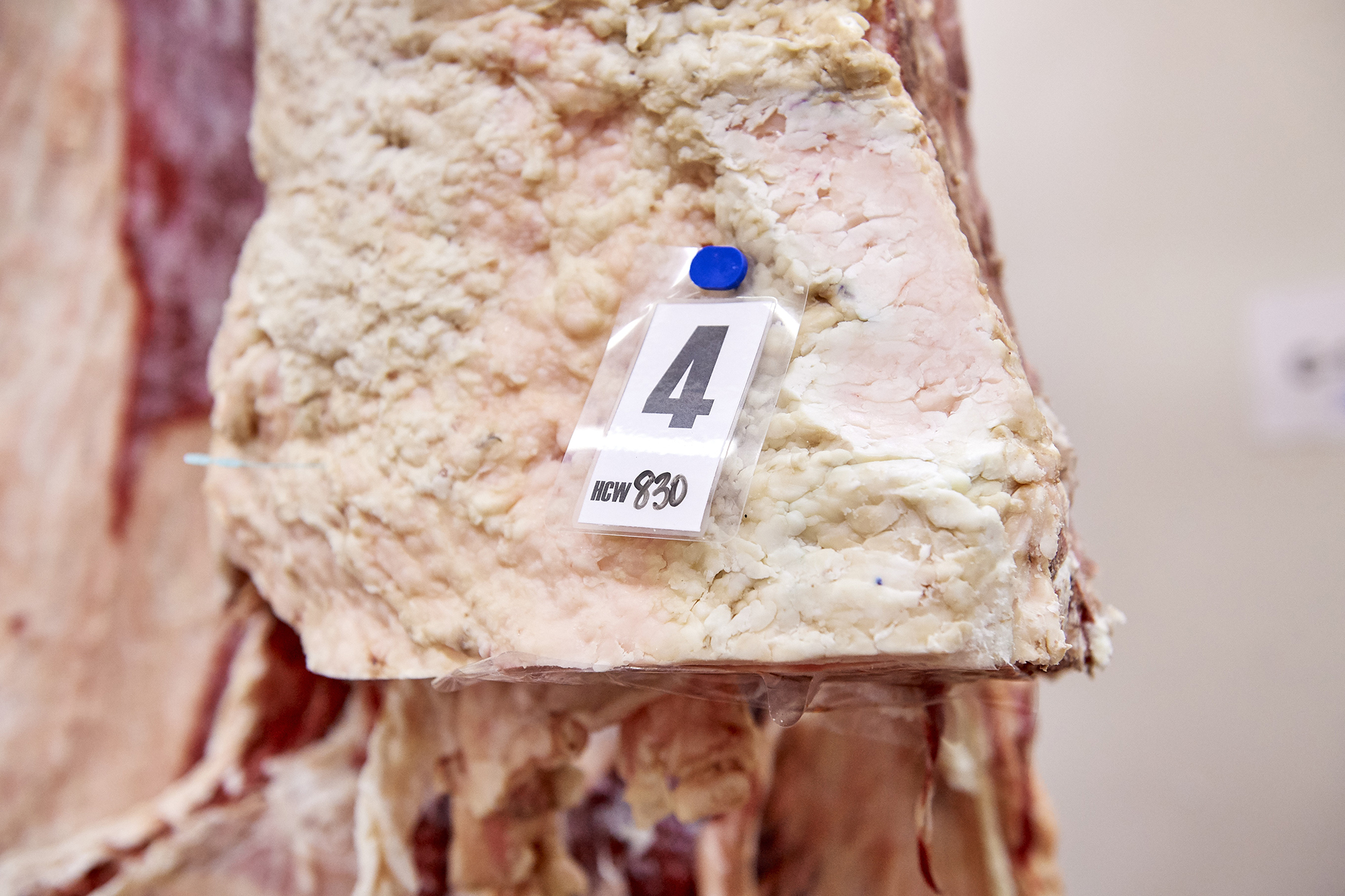
At 59, Miller has outlasted many of his contemporaries who’ve retired or lean on grad students to handle the bulk of the grunt work. He will have none of it. He’s still in the cooler every Saturday morning and still makes every road trip.
Miller admits there was a time when all of this consumed him. He jokes about “Old Testament Doc” and “New Testament Doc,” with the latter usurping the former around 2007. The program had fallen into a rut, having captured just one championship in the decade after winning four in the 1990s. “We always believed in doing the right thing and all those things, but we probably didn’t walk that very much,” Miller says. “We said, ‘Oh, winning is not important,’ but that seemed to be all we were focused on. We weren’t happy when we lost. We weren’t joyful, and we weren’t really good losers.
“When we stopped talking about winning and making that a priority is when we started having the success,” he says.
That could easily come off as coachspeak from a sports fanatic who keeps a signed greeting from Lou Holtz near his office door. But New Testament Doc, for all his drive, is a man who takes his team to church every Sunday, grills them steaks at his house, fires off inspirational group texts and becomes so enmeshed in their lives that Lucherk refers to Miller and Celia, who passed away in May 2018, as her second set of parents.
In the year since Celia’s death, the meat judging community at Texas Tech has become even more of a family for Miller: his support group while grieving and his prayer team during Sunday morning Bible studies at his church. Mark and Celia’s birthdays fall four days apart in February. When Mark’s rolled around this year, his students and colleagues threw a huge party at his house so he wouldn’t have to celebrate alone. Their importance in his life transcends any competition.
“I wouldn’t be able to breathe without them,” he says.
Texas Tech could no longer ignore reality after walking out of the cooler in Houston on March 2, the final major competition of the spring semester.
Houston was the Red Raiders’ turf, an event they’d won 13 out of the last 14 years. This year they placed fourth. One of the most disappointing performers, shockingly, was Taylor Schertz, who cruised through most of the day only to undo it all with one error when she misjudged the age of a beef carcass. It plummeted the team out of first place and her individual score down from a likely top 10 finish all the way to 36th. It was the fifth time in six major contests that someone other than Texas Tech had won. For the first time in years, the Red Raiders appear vulnerable.
Miller knew the day would come eventually. Sooner or later, the rest of the meat judging world was bound to catch up.
“Nobody understands how, winning 19 out of 21 contests over a three-year period and two national championships, that’ll never happen again,” he says. “It’s like the Dolphins’ perfect season. There’s too many good people and teams out there.”
O’Quinn got the same speech from Miller just before the Houston contest. He didn’t buy a word of it. Even now, he told his mentor, “we’re all chasing you.”
One month after Houston, Miller’s thoughts ricocheted between concern and confidence. He wondered aloud whether he’s “snakebit,” stuck in a pattern where none of his decisions break the right way. More than that, he’s wary of his team dipping back into old habits, so consumed with upholding the weight of the school’s tradition that they lose sight of the bigger picture.
And yet, he says, “I felt like we actually won Houston, even though we didn’t win.” Six of the top 13 individual scorers were Tech students; he just didn’t choose the right four for submission.
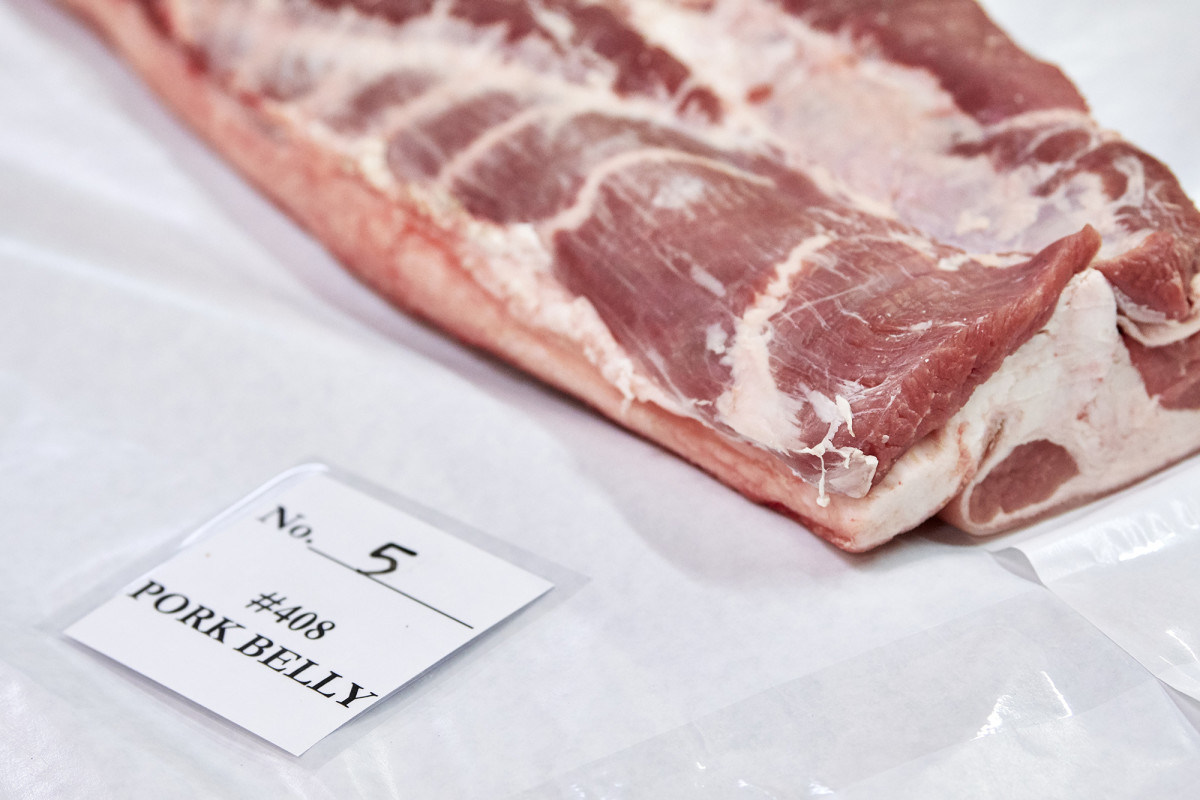
Miller suspects this is the deepest group he’s had in years. His goal each season is to roll into the national championship with 11 or 12 judges he can depend on. This year, at the halfway mark, he feels he’s already singled out eight, perhaps even nine. It’s mathematically impossible for this group to accumulate as much hardware as any of the 2015, ’16 or ’17 editions. But, down to his core, Miller believes this team is on their level.
“These kids are as good or better than those teams. Probably better, to tell you the truth,” he says. “I wouldn’t be shocked if we swept the fall.” All he needs now is for the results to catch up. Miller knows better than anyone that if they do, it will be because of moments like the one in Fort Worth, hours before he’d learn that Tech had won the competition.
He sauntered into the cooler, huddled his team together and marshaled them through each station, stopping to field questions and issuing gentle corrections. After 15 minutes he arrived in the room where Schertz had examined the pig carcasses. He paused near a plastic table lined with hams, planted his feet and pivoted toward his students. They were clustered in a half moon, Schertz near the middle. And as he spoke, the coach was nothing more than a teacher, smiling warmly in the bitter cold.
